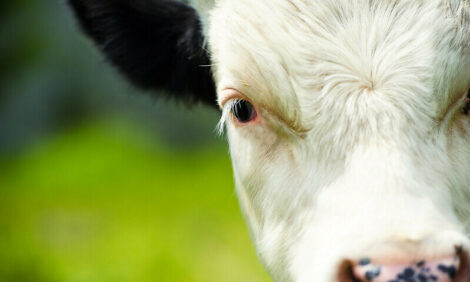



An Effective Solution For Milk Fever
UK - Agricultural specialist Agrimin has today launched study data showing the beneficial effects of Bovikalc on blood calcium levels in dairy cows and its ability to maintain a normal calcium level in the critical “Milk Fever” period after calving.Bovikalc calcium boluses raise iCa (ionized calcium) levels by up to 8.2 per cent after calving, an increase large enough to significantly reduce cases of potentially fatal Milk Fever in cows.
NADIS (National Animal Disease Information Service) data for August 2007 has reported that the incidence of Milk Fever rose considerably in July reaching, for the first time this year, the long term average. The occurrence of metabolic disorders continues to increase from season to season, with no indication of the cause of the increase. However, farmers and vets can introduce a range of management practices and nutritional interventions to help reduce the risk of animal suffering and economic loss.
In contrast to other minerals, blood calcium levels are hormonally controlled within a narrow band. Milk Fever affects five to seven per cent of cows in the first one to two days after calving. Furthermore, a sub-clinical level of hypocalcaemia may occur in 23 to 39 per cent of cows post-partum. Incidences also increase with age and parity as older cattle become less responsive to the hormonal calcium control mechanisms.
"After losing several cows, we looked at dry cow management and nutrition as well as using Bovikalc calcium boluses immediately at post-calving."
Jim J Parkins, Professor of Animal Health at the University of Glasgow and Director of the University Farm and Research Centre.
To get an idea of the magnitude of the problem for the modern dairy cow, the production of 10kg of colostrum requires 23g of calcium. A cow producing 25kg of colostrum would have to replace her total blood calcium every hour. Helping animals cope with ‘the delay’ in adjusting to this huge change in the demand for calcium is the basis for Bovikalc’s success.
A combination of academic and industry research is behind the design of Bovikalc boluses, which dissolve within 20 minutes and quickly deliver 43g of calcium to the rumen. Calcium is then released in two forms, calcium chloride and calcium sulphate, which is available over a 36 hour period. Furthermore, Bovikalc has been designed to avoid the palatability problems associated with gels and pastes.
Jim J Parkins BSc (Hons) PhD, C. Biol, F.I.Biol is Professor of Animal Health at the University of Glasgow and Director of the University Farm and Research Centre, an 850-acre grassland dairy, beef and sheep unit. After several Milk Fever fatalities, he started using Bovikalc as a preventative aid on the institute’s herds with extremely positive results. He says:
“In the Glasgow herd, one adverse effect of our programme of genetic and nutritional improvement has been an increase in the incidence of hypocalcaemia and clinical cases of Milk Fever. As the individual milk yield increased so did the problem of metabolic disorders.
“After losing several cows, we looked at dry cow management and nutrition as well as using Bovikalc calcium boluses immediately at post-calving. It’s an invaluable nutritional tool, which differs from other more rudimentary calcium supplements. Calcium chloride is an excellent source of dietary calcium but is caustic and can damage to the gullet tissue if given as a paste. The coating of the bolus prevents this and is quick to administer. After dissolving in the rumen, the calcium is rapidly absorbed and so helps maintain the blood levels at this critical period. Timing of administration of the bolus is very important and close observation of the cow is still necessary”.
Dairy Farmer Simon Jones found that Milk Fever was running at around 10 per cent in his 230-strong pedigree herd.
Simon explains:
“The problem was severe enough to warrant some action, particularly when you consider that we also lost, on average, two cows each year with toxic mastitis – which, in my opinion, was the direct result of them going down with Milk Fever. I believe Milk Fever caused them enormous stress and this lowered their ability to fight off infections.”
Simon took advice from a herd nutritionist and started administering Bovikalc calcium boluses to cows that needed an extra boost at calving.
He says:
“You can start to see the first signs of falling blood calcium and, if you’re quick, a clinical condition can be prevented. We’re nipping any potential problems in the bud with Bovikalc and as well as helping reduce the incidence of Milk Fever, the problem of toxic mastitis has also disappeared. The cows are stronger at and around calving and don’t succumb to infection. Administering a bolus is quick and easy – there are no excuses and so, as a result, there are fewer subsequent problems.”
TheCattleSite News Desk


